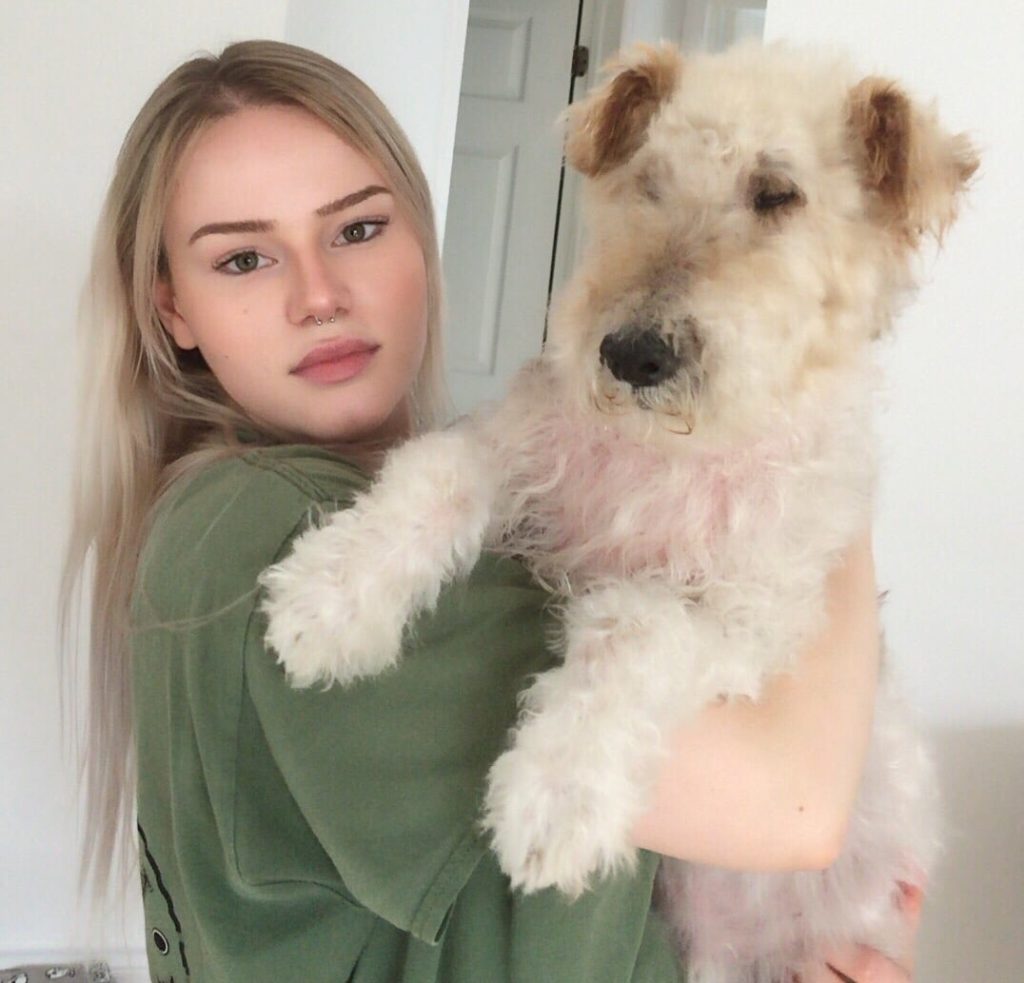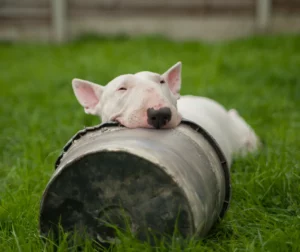Knowing how to deal with a dog’s behavior problem can be difficult. There are several factors that cause a dog to exhibit a particular behavior problem, such as genetics, training, socialization, and activity level.
In this article, you’ll see why a dog has behavioral issues and what you can do to help.
Why Do Dogs Have Behavioral Problems?
Behavior problems are actually natural behaviors in dogs. The problem is defined by the owners and their behavior management skills. Some people may see behaviors as problematic, while others may not see them as a problem.
For example, some owners don’t think their dog’s barking is a problem. They may like their dog to alert them when someone is on their property. Others might find the barking very unpleasant and embarrassing. Of course, several factors come into play, such as the intensity of the barking and where you live.
So, some behaviors are actually undesirable behaviors, but problematic for the owner. Then, owners often try to fix a problem but reinforce the undesirable behavior without knowing it. Here is an example:
A person contacted me because they no longer knew how to stop their dogs from barking. I quickly understood the problem when I saw them giving treats to make them stop barking. The barking stopped while the person was giving attention and treats, but it started again soon after.
In this situation, the person was rewarding their dogs’ barking with the intention of calming them down. So his dogs learned that to get attention and some treats, all they had to do was bark at their owner. You may think that this is obvious, but often times the owner will yell or try to talk their dog into stopping them from barking or jumping, only making the behavior worse.
Genetics
Genetics determine a dog’s breed-specific traits, such as height, coat type, and temperament. Thus, certain breeds are predisposed to have distinct behaviors. For example, Huskies tend to be very vocal and Terriers tend to dig. On the other hand, we cannot predict that dogs will exhibit a behavior only by their breed.
If we take the example of the Terrier, perhaps his ancestors did not tend to dog. So it is less likely that their descendants also have a tendency to dog, even if it is typical behavior for their breed.
Also, genetics means that dogs are predisposed to express behavioral problems and mental disorders like aggression, anxiety, and obsessive-compulsive disorder. All dogs can develop behavior problems if they lack supervision and leadership and their basic needs are not met. In addition, some breeds are more prone to develop mental disorders and health issues that can impact their behavior.
It doesn’t matter if you have a puppy or an adult dog or if your dog has behavior problems or not, a dog trainer or behaviorist can help you. He will assess his temperament and behavior and then make an intervention plan adapted to you and your dog. It will then be possible to train him to prevent him from developing a behavioral problem or getting worse.
Educational Methods
The environment of the dog plays a big role in his behavior. It affects how he decides to behave.
The methods of education and communication have repercussions on his perception and his emotions. This is why it is important to know how to properly punish your dog so that he wants to listen to you instead of avoiding a negative consequence that might lead to behavioral problems.
Reward-based training will build a strong bond and your dog will be mentally and emotionally healthy.
Dogs constantly communicate with us, but we often fail to recognize their signals. It is for this reason that it is essential to know the dog’s body language, especially appeasement behaviors. This will make it much easier to understand your dog’s mental state and avoid putting him in an uncomfortable situation.
Socialization
The socialization period is the time when the environment will have the most influence on a dog’s behavior throughout his life. For example, if a puppy has never met other dogs, he might become fearful and reactive when meeting other dogs as an adult. He has never learned how to behave around other dogs, which leads to confusion, stress, and even fear.
Knowing the period of evolution of the puppy until adulthood is essential to know when he’s in the socialization period, in the critical period, in the juvenile period, etc. Knowing these periods will make it much easier for the owner to know what they need to work on or avoid with their dog to be mentally and emotionally balanced.
The lack of socialization can then create problems and behavioral disorders. In addition, he will have much more difficulty adapting to different situations and environments.
Activity Level
The level of physical and mental activity will also have a significant impact on the behavior of the dog. Most behavior problems are due to a lack of stimulation. Boredom creates frustration and stress which increases aggressive behavior, stress, and anxiety.
How to Avoid Dog Behavior Problems?
All living things need to have an enriching environment. For example, we have hobbies, jobs, friends, goals, and all kinds of stimulation that keep our brains busy. If we had none of this, what would happen? Just like our dogs, we too would have behavioral problems!
This is why it is important to meet the dog’s needs by providing enriching experiences that will keep him mentally and physically healthy.
In order to avoid behavioral problems, it is essential to:
- Chew
- Burn his energy
- Have mental stimulations
- Have social interactions
- Live new experiences
By providing him with an enriching environment, you will not only be able to ensure his well-being but also increase his life expectancy. To learn more, see our article: “Stressed or Anxious Dog? The Solution: Enrichment“.
Chewing
All dogs need to chew, regardless of breed. It is an essential need that must be met, whether with a bone or with a chair leg. Chewing allows the dog to maximize his well-being and it must occur every day. In addition, chewing bones or toys are made to help the dog clean his teeth.
The action of chewing allows him to exert himself physically and relieve his chewing desires. This is why offering a chewing treat is a good way to reduce behavior problems. You can also redirect his attention to a bone to teach him the right behavior to adopt.
To learn how to manage your dog’s chewing urges, check out this article: “Puppy Bitting: Everything You Need to Know!“. You will find exercises and tips for dogs of all ages.
The best chews are bully sticks and duck feet. They are very popular with dogs and help clean their teeth.
Avoid low-end treats as much as possible, since most won’t actually help clean your dog’s teeth, such as “dentastix” style treats. The chewing treat you should not buy is rawhide (the white bones), as they are dangerous to your dog’s health. To find out why it can be dangerous, check out this article: “Rawhide: The Worst Dog Treat“.
Physical Activities
A dog’s physical needs will vary depending on the breed, life stage, and specific and individual needs. It is important to determine the amount of physical exercise, in order to optimize his health state.
Also, the more your dog has burnt his energy, the less he will exhibit undesirable behaviors such as jumping, barking, running away, digging, or mouthing. Thus, physical activity prevents behavioral problems and increases the frequency of relaxation behaviors.
It is beneficial to diversify physical activities to enrich your dog’s daily life. For example, during walks, do not always the same route and change locations. Find a new trail or street where you don’t usually go. Your dog may experience new smells and new sounds, and he might even see new things and new people.
Playing with your dog is a good way to burn his energy, and also create a strong bond. Toss the ball or frisbee or play tug-of-war games. You can also get a flirt pole which is a tool used to condition the dog and improve his physical abilities. It is a pole with a bungee cord where you attach a toy at the end, like the fishing rod for cats.
Mental Activities
Stimulate your dog’s brain with an activity where he must use his physical and intellectual abilities. This will help him improve his problem-solving skills and reduce stress and anxiety. Here are examples of interactive games that will stimulate your dog’s brain:
- Treat dispensing ball (Kong, West Paw Toppl, Omega Paw)
- Licking mat
- Sniffing mat
- Interactive bowl (slow feeder, puzzle)
Next, one of the best ways to stimulate a dog mentally is to teach him new tricks or play canine sports, such as Dog Dancing. Allowing him to play with other dogs is also very enriching and stimulating.
Social Interactions
It is important to vary social interactions in order to avoid behavioral problems. With social activities, we notice that periods of inactivity, as well as the cortisol concentration, are reduced and the dog is more relaxed and sociable.
By diversifying social interactions, you can keep your dog sociable throughout his life and prevent him from becoming reactive. In addition, it is very stimulating and rewarding for your dog.
Thus, these interactions will help him generalize his behavior by making positive associations with strangers and novelties. This approach can help with dogs that are reactive or have resource-guarding behaviors.
New Experiences
Living new experiences is important so that your dog can adapt more easily to changes. Introduce your dog to new places, people, objects, foods, animals, textures, and sounds.
Dogs discover the world mainly with their muzzle. So, do not hesitate to make him smell all kinds of things. For example, when cooking, let him smell ingredients and allow him to smell on walks. When you have guests over or meet new people, let your dog smell their palms.
Finally, by enriching your dog’s daily life, you will be able to attract his attention more easily and he will be much more tempted to listen to you. You will also be able to build a much stronger bond, you will have good physical and mental health and you will avoid behavior problems.
MANY factors will impact your dog’s behavior and the best way to avoid problem behaviors is to expand your knowledge and understand how dogs learn. You can also contact a dog trainer or behaviorist who will help you understand better your dog and why he acts the way he does. Remember that there is always a reason why your dog exhibits certain behaviors.






